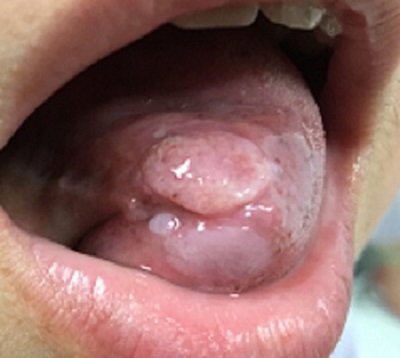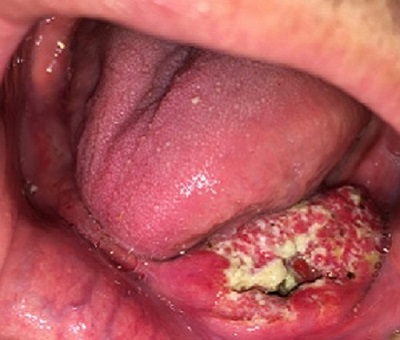Oral cancer
Oral cancer is associated with significant morbidity and mortality. Early presentations of oral cancer are usually asymptomatic, whereas late presentations include pain, discomfort, reduced mobility of the tongue, increased mobility of the teeth or an inability to wear dentures. Oral cancer varies in appearance and can mimic many other oral mucosal diseases (see Squamous cell carcinoma of the left ventral surface of the tongue, Squamous cell carcinoma of the right anterior ventral surface of the tongue and Squamous cell carcinoma of the left mandibular alveolus).
Any suspicious lesion needs early specialist referral for investigation and biopsy (see Assessment of oral mucosal disease)1 .
Squamous cell carcinoma is the most common oral malignancy, which arises from the epithelium of the oral cavity. Oral squamous cell carcinoma can affect any part of the oral mucosa; however, it most commonly occurs on the lateral surfaces of the tongue, the floor of the mouth or the gingivae.
Risk factors for oral squamous cell carcinoma include:
- advanced age
- male gender
- smoking or tobacco use
- alcohol use
- infection by oncogenic viruses (eg human papillomavirus)
- personal or family history of squamous cell carcinoma of the head and neck
- history of cancer therapy
- prolonged immunosuppression
- areca nut (betel quid) chewing.
Genetic susceptibility, environment, occupation and diet may also contribute to the development of oral squamous cell carcinoma.
Cancers originating from the salivary glands and supporting nonepithelial tissues are less common than squamous cell carcinoma. Metastatic cancers to the oral soft tissues and jawbones commonly originate from primary malignancies in the breast, prostate, kidneys or lungs. Leukaemia and lymphoma may also present in the oral cavity.



